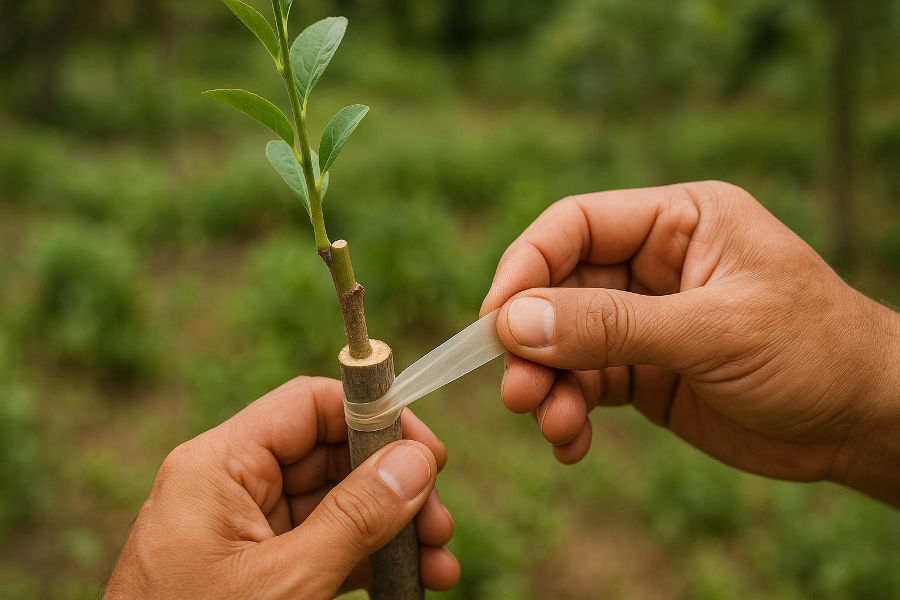Grafting in Agriculture: Uniting Plants for Enhanced Cultivation
Grafting is a horticultural technique that involves joining two plant segments—the scion and the rootstock—to grow as a single, more resilient plant. This method allows for the combination of desirable traits from both plants, such as disease resistance, improved yield, and adaptability to various environmental conditions.
Understanding Grafting
In the grafting process, the scion refers to the upper part of the plant, selected for its desirable characteristics like fruit quality or flower color. The rootstock is the lower part, chosen for its robust root system and resistance to soil-borne diseases. Successful grafting requires the alignment of vascular tissues to ensure the seamless flow of water and nutrients between the two parts.
Benefits of Grafting in Agriculture
-
Disease Resistance: Grafting can help combat soil-borne diseases by using resistant rootstocks, leading to healthier plants.
-
Enhanced Yield and Quality: Grafted plants often exhibit increased productivity and superior fruit quality, making them economically advantageous for farmers.
-
Size Control: Using dwarfing rootstocks can manage plant size, facilitating easier harvesting and higher-density planting, especially in orchards.
-
Environmental Adaptability: Grafting enables the cultivation of plants in challenging conditions, such as saline soils or areas with extreme temperatures, by combining tolerant rootstocks with desirable scions.
-
Accelerated Maturity: Grafted plants can reach fruit-bearing stages faster than those grown from seeds, reducing the time to harvest.
Common Grafting Techniques
-
Whip and Tongue Grafting: Involves interlocking cuts on both scion and rootstock, providing a large contact area for successful union.
-
Cleft Grafting: A method where a scion is inserted into a cleft made in the rootstock, commonly used when the rootstock is larger in diameter.
-
Splice Grafting: Suitable for herbaceous plants, this technique involves matching diagonal cuts on both parts without interlocking tongues.
-
Budding: A form of grafting where a single bud is inserted into the rootstock; often used in propagating fruit trees.
Applications in Agriculture
Grafting is extensively used in the cultivation of various crops:
-
Fruit Trees: Apples, mangoes, and citrus fruits are commonly grafted to combine high-quality fruit production with disease-resistant root systems.
-
Vegetables: Tomatoes, cucumbers, and eggplants are grafted to enhance resistance to soil-borne diseases and improve yield.
-
Ornamentals: Roses and other flowering plants are grafted to combine aesthetic appeal with hardiness.
